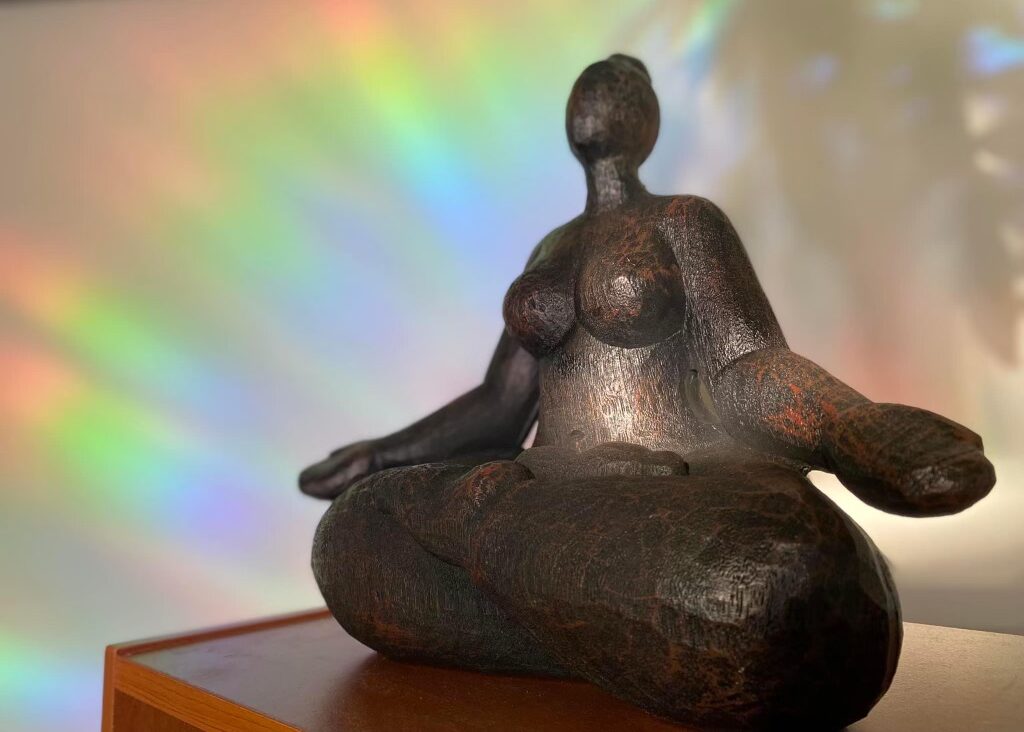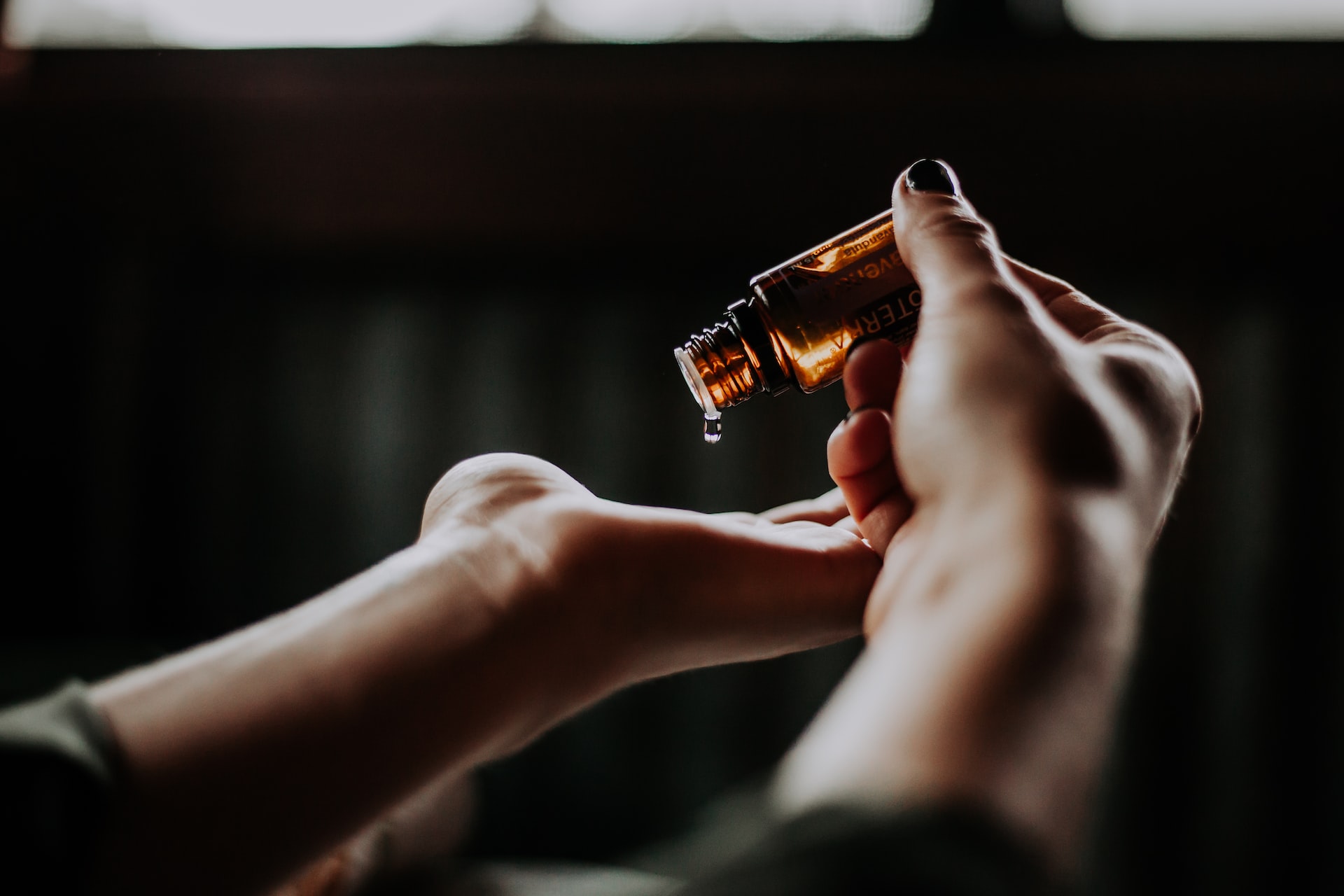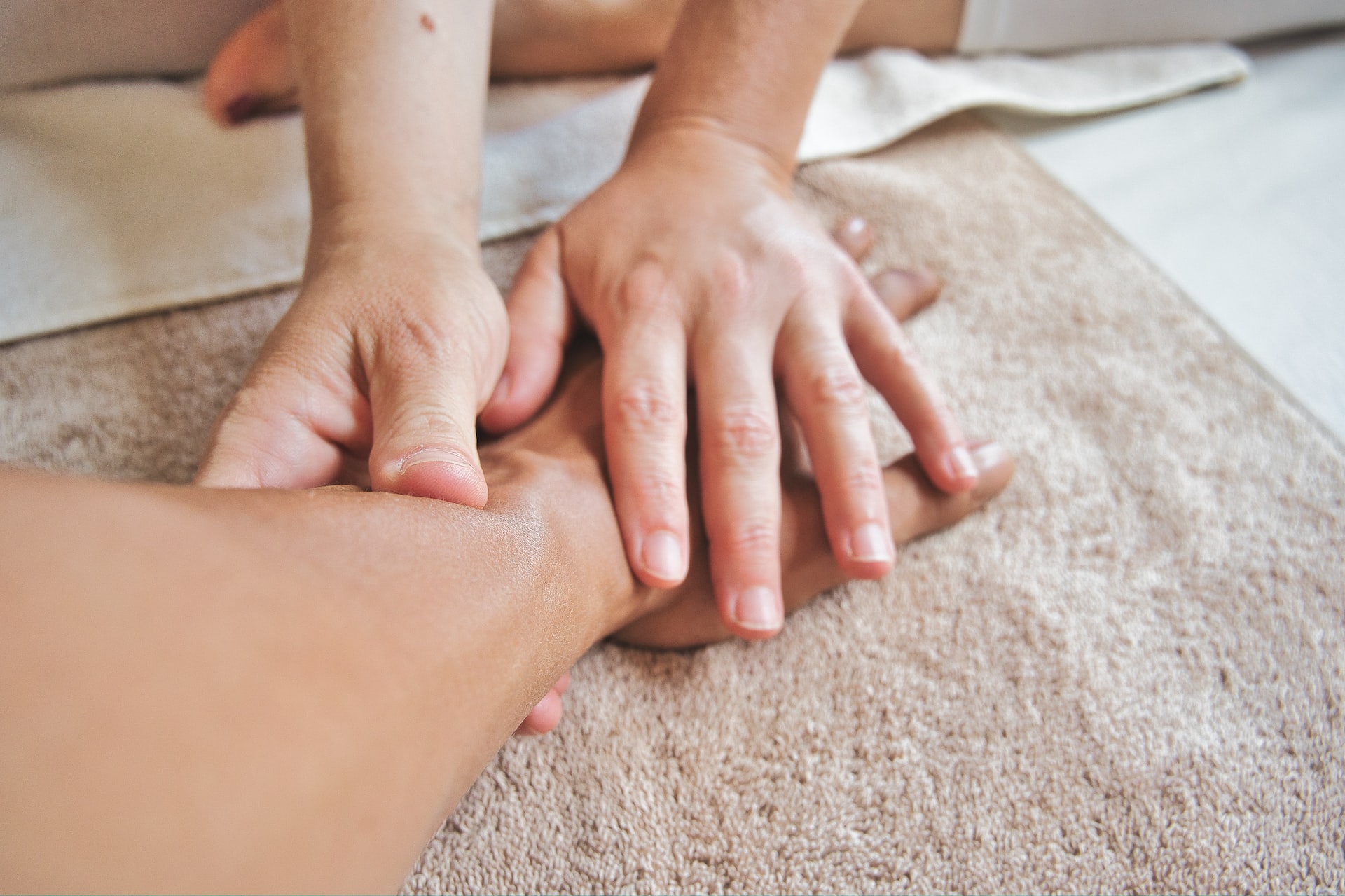How to Choose the Right Massage Therapy School
One of the most important things you’ll do in your massage therapy career is choose what massage therapy school to attend. Choosing your program is the essential first step to building a foundation of knowledge, skills, and abilities you’ll need for a long and successful career.
There’s a common misconception that all massage therapy programs deliver the same training, but there are many diverse options for massage therapy schools. Let’s dive into the most important questions you may have when deciding what program best fits you.
Finding the Right School for You
With over 1,000 massage therapy programs in the United States, narrowing it down can be difficult. How do you compare them? How do you evaluate their programs?
When comparing massage therapy schools, look for:
- The school’s curriculum and the types of bodywork taught
- The instructors’ professional backgrounds and client reviews
- The facilities and location of the school
- Up-to-date state licensure
- Open house dates to see the school and meet the instructor
Be sure to go see the schools you’re interested in. Scheduling a tour to see the facilities and meet the instructors can help make your decision easier.
Essential Questions to Ask When Choosing a Massage School
What are the school’s mission and approach to massage therapy?
A mission statement will tell you what’s important to each individual massage therapy program. Reviewing each school’s mission statement will help you choose which school aligns with your own core values.
Our mission statement at NEPA School of Massage is “fostering an atmosphere that promotes a safe, orderly, caring, and supportive environment for our students.” Our main goal is to provide all individuals with a thorough and extensive massage therapy education to become licensed massage therapists.
Is the school devoted solely to massage therapy training, or does the school offer other vocational training programs?
Some independently-owned schools, like NEPA School of Massage, solely offer massage therapy training, whereas other schools might offer various vocational programs. It’s important to note that independently owned schools that specialize in massage therapy and bodywork training tend to have a high commitment to maintaining the integrity of massage therapy.
How is the curriculum designed and delivered?
A reputable school will have its curriculum available for you to view online. Comparing each massage therapy school’s curriculum will give you a good idea of what you’ll learn and the type of massage you can perform after graduating.
Some schools specialize in one massage therapy modality, while others offer foundational courses. If you’re starting your journey to becoming a massage therapist, you’ll want to find a foundational program to teach different types of massage, ethical business practices, and much more.
Another critical part of massage therapy school is hands-on training. A good massage therapy program will have built-in hands-on training with fellow students and the community.
Check out NEPA School of Massage’s curriculum.
Is the school accredited by a national accrediting agency or approved regionally?
Look for schools that are either accredited or licensed by their state. Licensed schools must meet or exceed strict standards monitored by an external organization or state. Attending a licensed school ensures you’ll receive a high level of education and training to jumpstart your massage therapy career.
NEPA School of Massage is licensed by the Pennsylvania State Board of Private Licensed Schools – the process was rigorous and gave us the opportunity to shape our curriculum to ensure that every student who graduates our massage therapy program is well-rounded.
Who directs the massage therapy program? How long have they been doing that job? What are their qualifications?
A massage therapy program is only as good as its instructors. If they’re not passionate about the profession, that will be the first thing you notice. Booking a school tour will give you the chance to meet the instructors and get a feel for the culture and training offered.
Be sure to look at the instructors’ reputation as massage therapists. Do they run their own business? How long have they been working? Are they successful? Do they have glowing client reviews? Do you get a good impression when you meet or speak with them?
Meet the owner and instructor of NEPA School of Massage.
What is the student-teacher ratio for hands-on classes?
Look for a low student-to-teacher ratio when comparing massage therapy schools. Smaller classes will ensure maximum instructional effectiveness and individual attention that all students deserve.
At NEPA School of Massage, we have a 10:1 or 10:2 student-to-instructor ratio, depending on the class type.
Can classes fit my existing schedule?
Many massage therapy programs offer both full-time and part-time programs. We’re happy to announce that NEPA School of Massage offers both types of programs.
Will the school help me with job placement?
Many schools work hard to find job placements for their students as they graduate and become licensed. At NEPA School of Massage, it’s our privilege to help our students find employment at local spas, rehab clinics, doctor offices, massage studios, and private practices.
Do they offer continuing education in advanced bodywork?
In Pennsylvania, massage therapists need 24 continuing education units every two years. If you plan to stay in the area after graduation, look for a school that offers continuing education classes. These courses will keep you up-to-date on the latest ethics and massage techniques.
NEPA School of Massage hosts various classes throughout the year.
Final Questions to Consider
We highly recommend that you schedule a school tour with all schools that you’re considering. A tour will help you narrow down your choices, but be sure to ask questions while you’re touring the facilities and meeting faculty:
- Does the school screen applicants?
- What does the school look for in students?
- How do they determine who will be accepted?
- Do they help prepare you for the National Board Exam?
- What makes them special?
And finally, this is a personal question for you: What is your gut reaction to the staff and facility?
What Massage Therapy Program is Right For You?
Only you can answer that. The process of deciding which massage therapy school to attend will differ for everyone based on their personality, the program’s curriculum, and the instructors.
If you remember only two things from this blog, let them be:
- Is the school licensed by the state?
- Did you feel good when you toured the school?
And if you’d like to schedule a tour of NEPA School of Massage, we’d be happy to have you.
Optimal Self Care for Massage Therapists
Taking care of yourself should be your top priority as a massage therapist. Our work is rewarding but demanding, so implementing a solid self-care routine is a must.
Most of us are managing a career with a list of regular clients, and some of us have the added stress of running a business or a school, but all of that mental stress is coupled with the strenuous physical effort of our jobs.
Placing priority on self-care can help maintain your physical health, reduce stress, and even make you more profitable. Read on to discover the top self-care tips we love sharing with our students and our colleagues.
What is self-care for massage therapists?
Self-care for a massage therapist is the act of taking care of yourself. The purpose of self-care is to physically and mentally protect yourself to ensure you’re able to continue practicing massage therapy.
Why is self-care important for massage therapists?
Massage therapy is a physically and emotionally demanding job. Incorporating daily self-care will protect from injury and avoid burnout. Massage therapists have a high burnout rate due to a lack of consistent self-care. And that doesn’t need to be the case.
Because we work in the health and wellness industry, we need to be following the tips we give to our clients. It’s important to set an example and be a role model. And the easiest way to do that is to take care of ourselves.
The Best 9 Self-Care Tips for Massage Therapists
1. Schedule regular massages
The best way to keep your body ready for massage others is to get a massage yourself. Many of your colleagues would gladly trade services—you only have to ask!
Trading massages will help you remember what it feels like to be on the receiving end of a massage and experience different techniques.
Try to schedule a massage weekly or biweekly. However, if you cannot get a massage weekly, self-massage can fill in the gaps. This can include stretching or using therapy tools like a massage gun, foam roller, or massage ball.
2. Take care of your hands
Our hands are our most important, fundamental tool, and massage puts a high demand on them. Use your forearm, elbow, or even therapeutic tools to apply treatments whenever possible.
Here are some remedies for sore hands:
- Soak hands and forearms in cold water. This will reduce inflammation and fatigue.
- Soak hands in a warm Epsom salt bath. This will help combat any pain.
- Mainly focus on your hands and wrists. Check out this video for a guided hand and wrist stretch.
- Wearing a wrist brace. A brace will keep your wrist in a good anatomical position, reducing pain and inflammation.
- CBD creams. CBD creams (and TCH creams if your state allows them) will relieve muscle and joint pain.
3. Exercise regularly
An exercise regimen will help keep your body strong and your mind clear. Exercise will also develop your endurance and improve your energy levels, making a full day of massage less exhausting.
A basic workout routine should include some sort of enjoyable cardio and strength training 3-4 days a week. On your off days, incorporate some basic stretching – YouTube is flooded with guided exercise videos.
One thing to take away from this is to choose an exercise modality that you enjoy. This will enable you to keep up the habit of exercising regularly.
4. Eat healthy and stay hydrated
We’re not going to prescribe any diet here, but there are a few essential nutrition tips to ensure you’re nourished and hydrated throughout the day.
- Eat protein and healthy fats to stay fuller longer.
- Eat fruit and vegetables.
- Drink half of your body weight in ounces (If you weigh 150 pounds, you’ll need to drink 75 ounces throughout the day).
- Add anti-inflammatory foods to your diet. Foods like turmeric, ginger, cinnamon, and garlic.
5. Use proper body mechanics
Employing proper body mechanics during your massage is one of the most critical components of having a long and healthy career. This career-saving tip will also prevent injury and help us be more effective and efficient.
Here are some helpful tips from the American Massage Therapy Association:
- Table height. Make sure your table is at the right height for you. Higher tables mean less low-back bending and normal wrist angles. Lower tables will increase the stress on your lower back because you’re bending more. To find the best height for you, start with the table at half your height.
- Start with your feet, placing them shoulder-width apart. Use your body to stay balanced and keep your body in alignment with the direction you’re massaging.
- Use an uphill stroke to have the most mechanical advantage and need to push harder to maintain pressure. Keep your hands, fingers, and wrists relaxed as you massage.
- Use your forearms to generate force and pressure. Avoid using your thumbs and elbows when you need to apply pressure.
6. Listen to your pain
Pain is the body’s way of telling you something is wrong. The sooner you’re aware of the pain and take care of it, the sooner you can take action to correct the issue.
Listening to your body is an essential preventative step. Your clients will understand if you’re honest with them and tell them that you’ve sustained an injury. They want you at your best, and you should, too.
7. Adopt different styles of massage
Because there are so many repetitive movements, massage therapists are at risk for repetitive stress injuries. Once you’ve established a good foundational massage technique, branch out and learn different techniques.
Learning new massage therapy techniques and styles will not only keep you healthy but will also keep you growing professionally.
8. Establish good sleep hygiene
Sleep is one of the most important steps to take for overall health, especially in a physically demanding profession. Sleep repairs the body improves mental and physical performance, and boosts immune function. It also regulates our hormones and emotions.
Here’s how to improve your sleep hygiene and routine:
- Develop a consistent sleep schedule. Wake up and go to bed at the same time every day, even on weekends. This is more about getting you in the habit of conditioning your body to wake up and feel sleepy naturally.
- Aim for 7-8 hours a night.
- Lower the temperature in your bedroom. A cooler room means a more restful sleep.
- Resist using electronics before bed. The light from the screen will keep you up. Instead, opt for a book or guided meditation.
9. Enjoy stress-relieving hobbies
There will be moments when our jobs feel all-consuming. But it’s crucial to incorporate activities throughout the week to relieve stress and to enjoy ourselves.
Here are some of our favorite ways to relieve stress:
- Meditation
- Hiking
- Unplugging from technology for a day
- Reading
- Spending time with friends and family
Take care of yourself
You are the most important person in your life. Your physical and mental health needs to be a top priority if you wish to maintain a long-standing, rewarding career.
Top 5 Benefits of a Massage Therapy Career: From Income to Flexibility
If you’re starting out or looking to take on a new career in the health and wellness industry in 2023, then massage therapy should be high on your list. Massage Therapy is an incredibly rewarding career and is well-suited for an individual who is compassionate, hardworking, and dreams of helping others.
Wondering how to become a massage therapist (especially in Pennsylvania)? Check out our blog on the topic.
Let’s dive into the top five benefits of beginning a career in massage therapy.
The Top 5 Benefits Of A Massage Therapy Career
If you’re starting out or looking to take on a new career in the health and wellness industry in 2023, then massage therapy should be high on your list. Massage Therapy is an incredibly rewarding career and is well-suited for an individual who is compassionate, hardworking, and dreams of helping others.
Wondering how to become a massage therapist (especially in Pennsylvania)? Check out our blog on the topic.
Let’s dive into the top five benefits of beginning a career in massage therapy.
1. The Alternative Health Industry Is Booming
Alternative healthcare in the United States is growing at an incredible rate, with Americans spending over $30 billion (out of pocket) a year on alternative therapies, including massage therapy.
With people seeking out alternative ways to treat their aches and pains, the massage therapy profession is growing at an even quicker rate. Over the next decade, the U.S. Bureau of Labor Statistics shows projected growth of 21 percent.
There has never been a better time than now to begin your massage therapy career.
2. Work Opportunities Abound
If you’re someone who gets easily distracted by living the same life day in and day out, massage therapy is one of the few careers that offers a variety of work opportunities. After you graduate from a licensed massage therapy school, you get to decide what setting you want to work in, the type of massage or bodywork you want to provide, and the type of clients you like to work with.
As a massage therapist, you can choose to be a generalist and offer your services to a broader range of clients. Or you can choose to narrow your focus and specialize. Specializing in a certain type of massage or clientele is one way to become known as an expert in your field.
Here are some settings you can choose to work in as a massage therapist:
- Alternative health and wellness clinic
- A Chiropractor or physical therapist office
- An established massage therapy practice
- A spa, salon, hotel, or resort.
- Cruises
- Gyms
- Your own office
- Your home or client’s home
As you head into massage therapy school, take some time to consider your setting, type of massage modality, and client. Your teachers can help you determine your strengths and set you in the right direction.
3. Excellent Income Potential
Many of our students ask us, “can you make good money as a massage therapist?”
The answer is yes, you can. The median pay is $42,820 per year, which varies significantly depending on where you live, where you work, whether you’re self-employed or an employee, how many hours you choose to work, and whether you’re committed to developing your skillset.
The American Massage Therapy Association has an informative industry fact sheet that indicates massage therapists typically charge an average of $75 for a one-hour massage and work an average of 26.6 hours.
Your income will be based on where you work; however, working for yourself is typically the most common and highest-paying option. Be sure to consider the pros and cons of each job setting, one that best fits your work style and personality.
4. Flexible Work Schedule
If you’re looking for an escape from the average 9-5 job, massage therapy is a great way to forge your own path and schedule. While there are massage therapy jobs that offer full-time positions, there are plenty of other ways to arrange your schedule. You’re able to work part-time, weekends, contract hours, or as a “side hustle.”
If you’re looking for the ultimate flexible work schedule, become self-employed and learn how to market yourself well.
5. Massage Therapy Is A Rewarding Career
And finally, enjoying the job you choose for yourself is essential. Massage therapy made the Top 100 Best Jobs in the 2021 U.S. News & World Report.
Of course, we don’t want you to think we’re looking at massage therapy through rose-colored glasses. We have a combined thirty years in the industry at NEPA School of Massage, so we know the pros and cons well. While rewarding, there are challenges because every client has their own individual issues that need to be accommodated.
Due to how many different people you’ll see throughout your day as a massage therapist, it’ll help your workdays feel less monotonous. You’ll help each of your clients overcome pain, anxiety, depression, trauma, and injuries.
Is Massage Therapy the Career For You?
Only you can answer that.
If this blog has kept your attention this far, you might already possess the qualities needed for a successful career in massage therapy. If you’re ready for a challenging and rewarding profession, look no further than massage therapy.
How to Become a Massage Therapist in Pennsylvania
Our most frequent question prospective students ask is, “What does it take to become a massage therapist?”
To help prospective students, we’ve created a guide on becoming a massage therapist in Pennsylvania. You’ll learn what to look for when deciding on a massage therapy program, the courses you’ll take, and what happens after you’ve completed your program.
Enroll In a Board-Certified Massage Therapy School
If you’re serious about a career in massage therapy, it’s essential to look for a board-certified massage therapy program. These are typically offered at trade schools, colleges, and stand-alone massage therapy looks like NEPA School of Massage.
We advise finding a few schools you’re interested in, scheduling a tour, and meeting with the teachers. After all, your success as a student comes down to your education and the hands-on experience you gain throughout the course of a program.
Regardless of the program, the state of Pennsylvania requires every massage therapy student to complete at least a 600-hour board-certified program that includes the following:
- 175 hours of anatomy, physiology, kinesiology, and pathology
- 250 hours of massage theory and practice
- 25 hours of business and ethics
- 150 hours of coursework appropriate to massage therapy school
At NEPA School of Massage, we’ve handcrafted our program based on our education and combined 30 years of experience in the field. All to give our students the greatest chance of success in their careers.
The program at NEPA School of Massage consists of:
- 32 hours of business and professional ethics and conduct
- 14 hours of health and hygiene
- 16 hours of massage therapist self-care
- 40 hours of principles of touch and communication
- 94 hours of anatomy and physiology
- 40 hours of pathology
- 41 hours of kinesiology and assessment
- 122 hours of Swedish massage therapy
- 132 hours of advanced massage therapist
- 26 hours of clinical massage
- 14 hours of pharmacology
- 10 hours of aromatherapy
- 30 hours of clinic
- 6 hours of MBLEx preparation
Contact us today if you’re interested in scheduling a tour of NEPA School of Massage.
Pass the Licensing Exam
After completing all the required hours of your massage therapy program, you’ll be ready to take the licensing exam. All massage therapy students must pass an approved licensing exam to start working.
The MBLEx (Massage and Bodywork Licensure Examination) is the name of the exam for Pennsylvania. It’s a 100-question test that takes about two hours, testing your knowledge of massage therapy and practical, real-world application. You’ll receive either a pass or fail score. If you fail, you’ll obtain a report breaking down your performance and giving you areas where you can improve.
The Application Process
Once you pass your exam, you can apply and register with the state of Pennsylvania as a fully licensed massage therapist!
To receive your state license, you have to do a few things first:
- Submit your application to the PA Department of State
- Pay the application fee (fees are subject to change by year).
- Request and send your school transcripts directly to the Pennsylvania Board.
- Submit a current CPR certification
- Provide a copy of your driver’s license or valid ID
- Submit a copy of your high school diploma
- Obtain a background check for the last five years; PA residents can submit their form via the Pennsylvania State Police.
All forms must be submitted within six months, or else you’ll have to reapply and submit another application fee. The initial review takes up to fifteen days to complete.
Once you receive your license, you’ll be able to apply for jobs, start your own business, or become a traveling massage therapist at resorts around the country. With a massage therapy license in hand, a world of opportunities opens up for you.
Continuing Education
But of course, that’s not the end. You’ll need to stay in good standing with the state by earning continuing education credits each year. These credits are requirements for every massage therapist, and NEPA School of Massage offers continuing education courses throughout the year.
Here’s what else you need to know about CE credits:
- 24 credits need to be completed every two years
- 16 hours must be hands-on, in-person hours
- 8 hours can be remote or in-person
- 2 hours of child abuse recognition and reporting
- Every two years, you’ll need to pay a license renewal fee
- CPR certification needs to stay up to date and doesn’t count toward CE credits
The Best 5 Parts of Massage Therapy School
Deciding to become a massage therapist can be one of the biggest decisions you make for your career.
While the educational demands of learning anatomy, kinesiology, and pathology for a massage therapist can seem like a challenge for some, it’s important to remember that massage school isn’t all memorizing anatomical terms and massage techniques.
It’s also learning to connect with other people who often share a similar interest in a holistic approach to life.
1. MASSAGE TRADES
One of the most obvious perks to attending massage therapy school is the massage trades that happen during hands-on classes. Students learn by practicing techniques on each other and taking turns being on the massage table themselves.
Being massaged on a weekly basis has huge benefits to crafting your own skills but also taps into your own personal healing. Experiencing this type of self-care through therapeutic touch is a great way to jump-start your own path to becoming a massage therapist.
2. IGNITING YOUR INTUITION
Following your intuition is a necessary skill to be successful as a massage therapist, which is why many schools offer certain classes to guide you to do just that. Through fun interactive assignments, massage students learn how to connect with their clients, listen to their inner voice, and also interpret body language or reactions.
This is a skill that will take you from being an average therapist to a “SuperHero.”
3. LEARNING A HOLISTIC LIFESTYLE
Outside of learning the skilled trade of massage therapy, you will also become familiar with different approaches to holistic living. From studying healthy eating, exercise, deep breathing and yoga, Eastern medicine, meditation, affirmations, and mindfulness, students will be presented with a wide variety of healthy living techniques to implement into their daily lives.
4. MENTORING WITH MASSAGE PROFESSIONALS
In a private massage school setting, class sizes tend to be smaller and more intimate for learning. This is a great opportunity to mentor closely with a local massage teacher.
Learning from someone who has created a life for themselves with a massage career is crucial to developing as a therapist. Talking with them on a regular basis, learning from their experience, and sharing their passion for massage is a bonus to attending massage therapy school.
5. FORMING BONDS WITH OTHER STUDENTS
Many people who go through a massage therapy program say one of the best parts was the new friendships they formed with other students. Trading massages and learning about self-healing creates an atmosphere that fosters a connection between the students.
More often than not, students will continue their friendships beyond massage school and into their professional careers. This also helps create an industry where we can build each other up by referring clients and continuing to trade massages.
Ultimately, the best parts of massage therapy school will be what you make of it. Showing up every day with a positive attitude and warm energy is an important way to make learning fun!
Is a Career in Massage Therapy Right for You?
Massage Therapists are rapidly growing in demand since the pandemic as many people are starting to take their health more seriously. Massage therapy is now a bigger part of the conversation around healthcare than ever before.
We are starting to see massage offered in more settings such as corporate offices and hospitals. Thus creating a plethora of jobs for massage therapists across the country.
Locally speaking, massage business owners are struggling to find therapists to fulfill their hiring needs.
Now is a perfect time to enter into the massage therapy field. Demands are high and the therapist community is low in numbers.
However, this career isn’t ideal for everyone. There are many things to consider when deciding if a massage therapy career is right for you.
Exploring the ins and outs and some self discovery can help you come to the right conclusion of what will work for you!
SOME THINGS TO CONSIDER ABOUT A MASSAGE CAREER
Do you like working with people?
Enjoying human interaction is an absolute must for this career. As a massage therapist you will constantly be meeting new people all with their own unique personalities and energies. Being able to appreciate all types of lifestyles, body types, races and genders is essential.
How physically demanding do you want your career to be?
Consider the fact that massage therapists invest their own physical (and emotional) energy into every session they perform. Certain sessions can be more physically demanding than others and therapists must learn to practice proper self care to counterbalance that body exertion.
Is living a healthy lifestyle important to you?
As stated above, self care and healthy living are essential to maintaining a long term career in massage therapy. Proper sleep, exercise and whole food eating are at the top of the list of daily practices to ensure you can be the best therapist for your clients. Clients will also naturally look to you as a guide for healing and health.
Self employment vs. employee.
One great thing about becoming a massage therapist is the different employment options. Some therapists opt to be self employed by starting their own small business or LLC, while other therapists thrive as an employee at a spa or various other massage therapy businesses. It’s also perfect as a part time job to supplement a career you may already have!
A day in the life of a massage therapist.
Besides performing sessions with clients, a massage therapist has many other responsibilities. Depending on where you are employed you may be required to answer phone calls and schedule appointments, accept payment at the end of a session, attend to the constant flow of laundry, and general cleaning and up keep of the establishment.
Building a clientele.
Having a full book of regular clients most likely won’t happen overnight. If your goal is to be self employed, many massage therapists will allow their clientele to grow while they supplement with secondary employment.
The best way to build a strong group of regular clients is to be consistent with your quality of massages.
If you are debating whether a massage career is right for you, consider booking an appointment with a local massage therapist like massagenownepa.com.
Take a tour of NEPA School of Massage in Kingston, PA by calling 570-328-7898!






